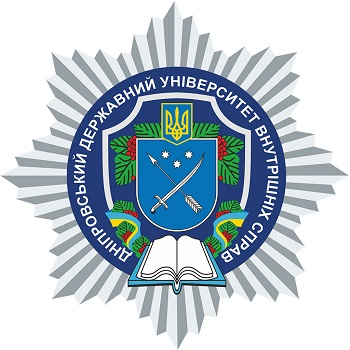RETROSPEKTIVE ANALYSIS OF FORMS OF STATE (TERRITORIAL) ORGANIZATION: POLIS, POLIS UNION
DOI:
https://doi.org/10.31733/2078-3566-2024-1-138-143Keywords:
aristocratic slave republic, ancient polis, democratic slave republic, nomad state, oligarchic slave republic, polis, polis union as a form of state (territorial) system.Abstract
The article considers the ancient polis and polis union as historical forms of state territorial organization. The qualification of ancient polis according to different criteria is given. Types and features of the main polis unions of the ancient world are defined. The classical ancient polis formed with the decline of the dominant Mycenaean civilization in Greece in the 8th century B.C. The fundamental prerequisite for the formation of the polis as a type of city-state was the processes associated with urbanization in proto-state associations, which were formed on the basis of territorial (neighbourhood) community. At the same time, the issues of the ancient polis and the polis union in the form of a state (territorial) organization. Taking into account the outstanding relevance and importance of this problem, as well as the urgent need to deepen the knowledge on this topic, the purpose of this paper will be an attempt to define the ancient polis and polis union as historical forms of state (territorial) organization. The basis for the classification of the ancient polis will be different criteria characterizing its components according to the form of the state, as well as others directly related to its formation. As an ancient version of the simple state, the polis had significant differences with the new state of the East. Firstly: the polis differed in its ability to have a subject colony. Second: Ancient polis formed polis unions while retaining a significant amount of sovereignty. The basis for the classification of the ancient polis will be different criteria that characterize its components according to the form of the state, and related to the peculiarities of its formation. A characteristic feature of many ancient polis, as well as a significant difference from the nomic states of the East, was not only the ability to implement their own foreign colonization policy, but also military and political consolidation – the ability to create or join polis unions – koinons. Polis unions – koinons were created according to the following approaches: amphiktonia – politically religious associations for the protection of sacred places; symmakhia, which presupposed the presence of active offensive actions of allied troops; epimakhia, the purpose of which was defensive actions; symplotia were formed from ethnically close polis and tribal associations. Taking into account the fact that ancient polis and their unions as state formations had different forms of government from archaic monarchies to different variants of ancient slave-holding republics, as well as differed among themselves by methods, techniques and methods of realization of state power, we consider it appropriate to consider them as historical forms of a state (territorial) organization.
References
1. Шама О. Погляди на державу в епоху пізньої античності: від негації Плотіна до «двох градів» Августина. Україна-Європа-Світ. Серія : Історія, міжнародні відносини. 2017. Вип. 19. С. 55–70. URL : http://nbuv.gov.ua/UJRN/Ues_2017_19_7.
2. Фісун О. А. Античні витоки демократичної теорії: метаморфози полізу та парадокси архе. Вісник Харківського національного університету імені В.Н. Каразіна «Питання політології». 2008. № 810.
3. Вар’ян О. О. Вплив полісу на формування образу ідеального громадянина у давніх Афінах. Наукові праці історичного факультету Запорізького національного університету. 2014. Вип. 40. С. 275–280. URL : http://nbuv.gov.ua/UJRN/Npifznu_2014_40_54.
4. Щёкин Ю. В. Межполисные и межплеменные союзы Древней Греции VIII–IV веков до н. э. Теорія і практика правознавства. 2016. Вип. 2. URL : http://nbuv.gov.ua/UJRN/tipp_2016_2_16.
5. Тарасевич В. М. Антична цивілізація: народження поліса-держави. Економічна теорія. 2022. № 1. С. 5–25. URL : http://nbuv.gov.ua/UJRN/ecte_2022_1_3.
6. Vernant J.-P. Mythe et Société en Grèce ancienne. L’Antiquité Classique. 1975. Vol. 1. Issue 44. Р. 329–330. URL : https://www.persee.fr/doc/antiq_0770-2817_1975_num_44_1_1782_t1_0329_0000_1.
7. Бутченко Т. І. Становлення соціально-політичного проектування в епоху античності. Гуманітарний вісник Запорізької державної інженерної академії. 2009. Вип. 39. С. 139–150. URL : http://nbuv.gov.ua/UJRN/znpgvzdia_2009_39_14.
8. Теорія держави і права : підруч. / кол. авт. ; кер. авт. кол. Ю. А. Ведєрніков. 3-є вид., перероб. і доп. Дніпропетровськ : Дніпроп. держ. ун-т внутр. справ ; Ліра ЛТД, 2016. 480 с.
9. Cartwright M. Polis. World History Encyclopedia. URL : https://www.worldhistory.org/Polis/.
10. Петрінко В. С. Поліс як державне утворення у «Політиці» Аристотеля. Науковий вісник УжДУ. Серія «Історія». 1999. № 4. С. 183–188.
11. Аристотель. Політика. Кн. III. IV, 7, 1279 а 20. Ізборник. URL : http://litopys.org.ua/aristotle/arist04.htm.
12. Синько Є. В. Античий поліс як історична форма державного територіального устрою. Актуальні проблеми державотворення, правотворення та правозастосування : матеріали наук. семінару (м. Дніпро, 9 груд. 2016 р.). Дніпро : Дніпроп. держ. ун-т внутр. справ ; Ліра ЛТД, 2017. С. 298–301.

